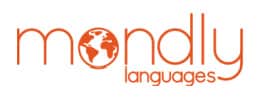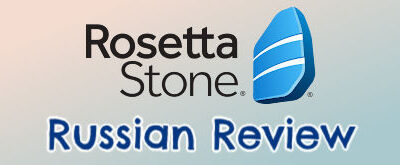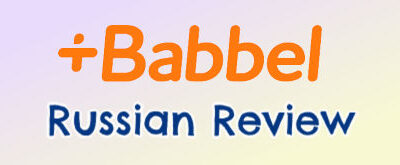Today, there are dozens of language learning apps to choose from, making the research and decision process pretty tough. Luckily though, we’ve used and tested out just about all of them. In this article, we take a comprehensive look at the Mondly app to see if it is the right fit for you.
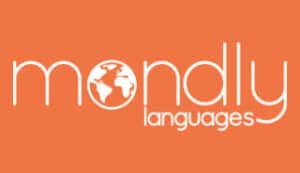
Mondly
- 40+ Languages
- AR & VR Apps Available
Pros
- Quick and engaging lesson format (lessons take just 5-10 minutes)
- Diverse set of practice exercises and drills
- Affordable subscription plans (as low as $4 per month)
- End of lesson recaps are effective for material retention
- Unique, super fun AR & VR apps available
Cons
- Limited grammar instruction
- Wish the verbal practice exercises were more in-depth
Video Review: Is Mondly Worth It?
In the video below, Bianca from the Guide2Fluency team walks you through the major pros and cons of Mondly.
How The Mondly Program Works
Let me begin this evaluation with an overview of how the Mondly program works. When you first login to the Mondly app, you land on the dashboard, which looks like a giant map covered in geolocation pins.
It looks kind of like a learning path because it seems like the map goes from left to right, but it’s a little less structured than that. Essentially, each geolocation pin is a collection of eight lessons that covers a specific topic or theme. Think things like travel, romance, and school, just to name a few.
While the dashboard seems path-like from left to right, the truth is that you can jump from pin to pin however you want. There is no true order to them and they don’t really build on one another in terms of difficulty. It’s more about what you learn about.
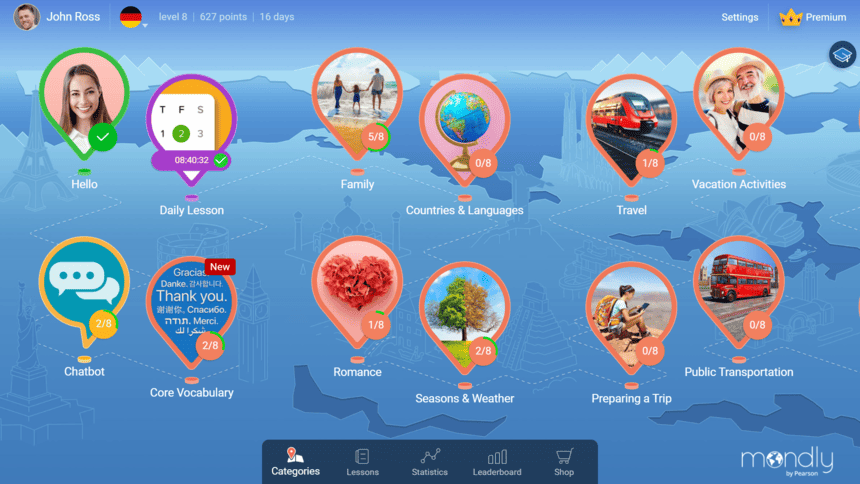
However, regardless of which pin you jump into to start working lessons, there’s always a daily lesson. This is the baseline of the Mondly program and is critically important.
Everyday you’re given a single daily lesson to work through, and when you finish it, it will be marked as complete on your dashboard. From there, a countdown clock will start to run until the next day’s daily lesson is ready.
This is the backbone of the Mondly program. The Mondly team wants you working at least one lesson every single day, keeping your streak alive and staying consistent, and then you can work these bonus lessons under the geolocation pins whenever you want. Thus, it’s really just a daily lesson plus supplemental lessons for those overachievers out there. 😜
As for what the lessons themselves are like, they’re basically the same in terms of length, format and content. This is true whether you’re talking about the daily lesson or a lesson from the map.
Each Mondly lesson takes about 5 minutes to complete and is comprised of a series of hands-on, rapid fire drills. There are flashcard-type drills, fill-in-the-blanks, speaking drills, translation exercises, matching pairs, back-and-forth mock conversations, spelling drills, and a few more. In this respect, Mondly is a lot like Duolingo. It’s an app built on fast-moving, highly diverse exercises.
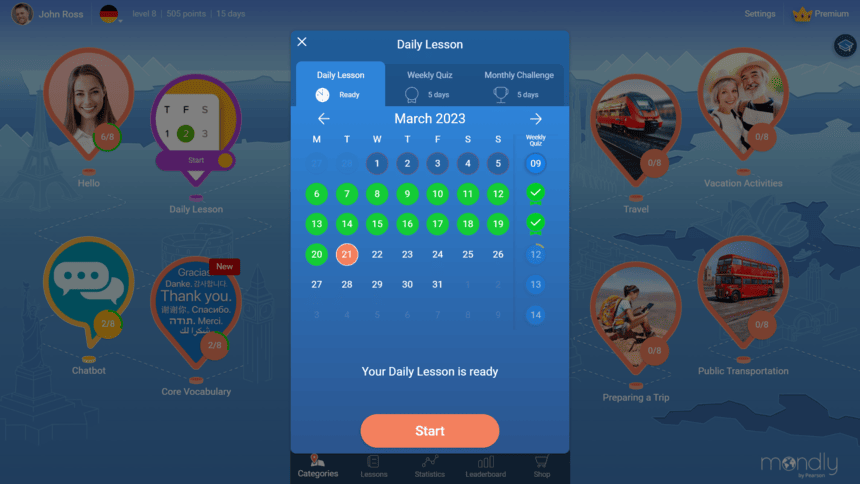
When each lesson is over, the program gives you a quick recap of the vocab from the lesson in rapid succession, and then it takes you to a screen full of stats which gives you all of your performance data.
That is sort of it for a high level summary. There’s nothing too complicated about it. There are some weekly quizzes and monthly challenges, as well as upgraded features like VR and AR apps, but if you’re looking at the core language program, that’s it.
There are no videos, audio lessons, or grammar modules of any sort. You work your 5-minute daily lesson, get your daily review and recap, and then you’re free to knock off other lessons in the geolocation pins on the map based on topic. From that perspective, it’s a very straightforward language app.
Mondly Price
Before getting into the strengths and weaknesses of the Mondly program, let’s quickly breakdown Mondly’s pricing and how they compare to other apps.
Mondly has three different packages:
- pay-as-you-go monthly subscription = $10/month
- 12-month subscription = $48/year (i.e., $4/month)
- lifetime access package = $100 (after discounts)
Putting these prices in perspective, the $10 monthly subscription is very par for the course. That’s right in line with Babbel, Rosetta Stone, Busuu, and a few others. They almost all charge somewhere in the neighborhood of $10 per month.
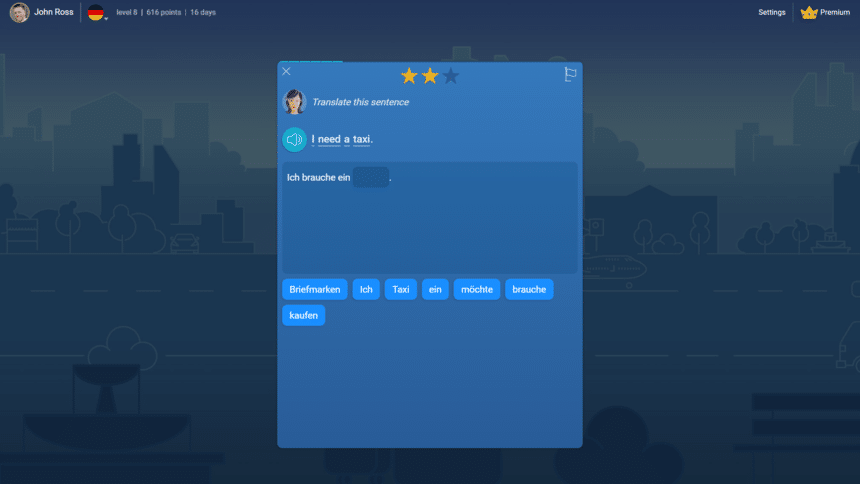
However, the 12-month subscription which breaks down to $4 per month is significantly cheaper than other apps. Most other programs won’t go below $6-$7 per month, so $4 per month is a bargain. Plus, it’s the same with the lifetime package. At $100 for the lifetime plan, this is a great value. Mondly is definitely a high-value app from that perspective.
Reasons To Use Mondly
Now that I’ve dissected how the Mondly app works, let’s get into what I like and don’t like about Mondly. Let’s start with the pros.
Diverse Mix of Practice Drills
The first thing that I really like about Mondly is the fun, diverse mixture of drills. Some language apps use boring and repetitive exercise mixes that hit the same drill types over and over (see Rosetta Stone).
However, Mondly uses a very nice mix that keeps things balanced and engaging. To reiterate, there are flashcard drills, fill-in-the-blanks, speaking exercises, translation prompts, matching pairs, back-and-forth dialogues, spelling drills, and a few more.

It’s a solid blend of hands-on drill types that I really enjoyed. There was never any feeling of boredom or monotony with Mondly.
Short Lesson Format
Another factor to consider here is lesson length. I like that Mondly uses shorter lessons than most.
This can be a good or bad thing depending on what you’re looking for in your program, but for a lot of people, these short, bite-sized lessons are perfect.
Your daily lesson only takes five minutes, and then if you care to squeeze in a couple more topical lessons throughout the day, those only take five minutes each as well.
From this perspective, the Mondly program is very manageable. It’s much more about consistency day-to-day than it is about depth or time spent studying.
Valuable Recap Sessions
The third highlight of the Mondly program is how they give you a quick recap at the end of every lesson.
Every time you complete a lesson, they quickly run you through a review session where you recap each word or phrase that you learned. There are usually around 10 to 15 key phrases, and Mondly will run through them in under 30 seconds.
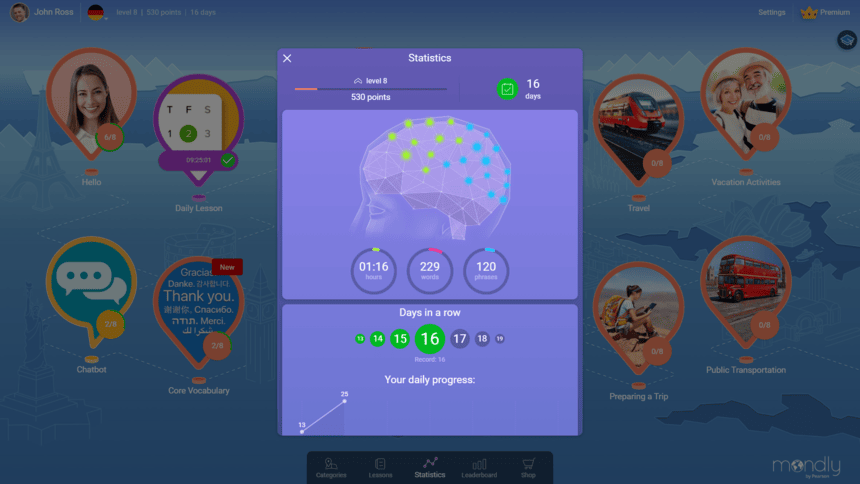
It’s nothing novel, but it is just nice way to drive home what you learned. Plus, they use this cool brain feature where you can go back and review related vocab and phrases whenever you want.
There are these little clusters of related phrases that are grouped together on the brain to make reviewing easier. I was a big fan of that.
Grammar Charts
Lastly, we need to discuss grammar. To be honest, I have a love-hate relationship with how Mondly does grammar. Let me explain.
Mondly doesn’t really give grammar much coverage. There are no dedicated lessons, teaching points, or in-depth explanations about grammar of any sort.
Instead, Mondly leverages these little verb conjugation charts in each exercise. You can hover over any verb and it will show you how that verb is conjugated based on who is doing the action, as well as how the verb is conjugated in past, present and future tense.
These little charts are super useful for seeing how to use verbs and I like this feature a lot. However, I’m not really crazy about the overall lack of grammar instruction.
Reasons NOT To Use Mondly
Having discussed why you should use Mondly to learn a new language, let’s cover the reasons now why you should not use Mondly.
Limited Grammar Instruction
As for the downsides of the Mondly program, let’s start where I left off above, grammar.
As noted, there is a clear lack of direct grammar instruction in this program. Mondly has the useful verb conjugation charts, which I do like, but there are no dedicated grammar lessons, grammar teaching points, or in-depth explanations whatsoever.
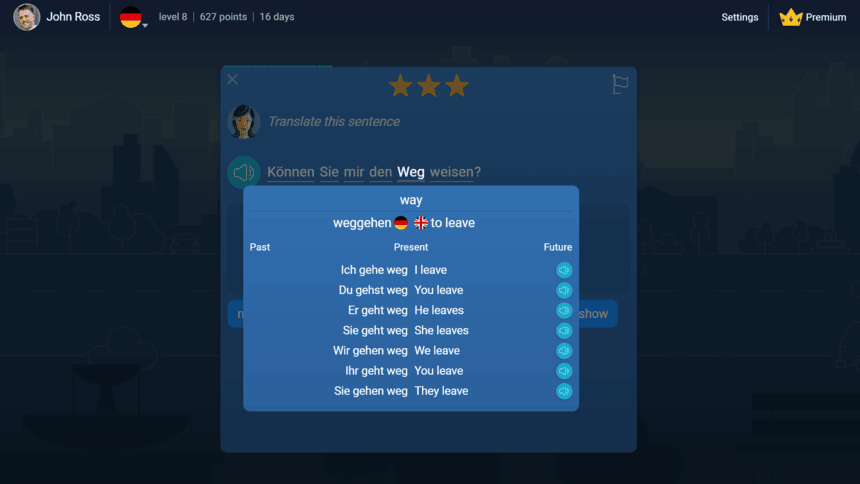
It is more on you to learn grammar intuitively, which I wasn’t crazy about. Personally, I much prefer how Rocket Languages and Babbel do it with dedicated grammar content.
Difficult For Beginners
The next drawback is how advanced Mondly is from the start. Basically, Mondly just drops you right in to a daily lesson and you start learning full sentences.
There is a slight warmup with basics in the lessons of the first two or three geolocation pins on the map, but otherwise, you’re just tossed in. Even your first daily lesson assumes you have some working knowledge of the language you’re learning.
If you have any level of basic understanding of the language you’re learning, you’ll be fine; however, if you’re a complete beginner, I could see how this would be a little overwhelming.
It’s not like typical courses that start with one- and two-word building blocks and build up from there. Frankly, I’d like to see some more beginner-level lessons early on with Mondly.
Verbal Practice Is Limited
Lastly, I would like to note Mondly’s conversational exercises. Mondly sort of hypes up their chat-based conversational practice, which you get in every lesson grouping on the dashboard, but honestly, they’re just alright in my opinion.

I personally think this feature’s usefulness is somewhat limited. Mondly basically markets this tool as the next great AI breakthrough, but I’m not buying it.
They’re fun, but they lack the in-depth conversational and verbal practice I was expecting. They’re more like quick text message conversations. It’s a cool idea, but kind of an overrated feature in my opinion.
Verdict: Is Mondly Worth It?
I generally like Mondly as a language learning tool. In this category of language apps with faster moving, more game-like lessons, I think it is one of the better options. It’s definitely better than Duolingo, Busuu, Memrise, LingoDeer and some others.
To be clear, I don’t think Mondly offers the depth of learning you get with Babbel, Pimsleur or Rocket Languages, which each offer more robust learning frameworks overall, but if you’re looking for an interactive, engaging program with more bite-sized lessons, then I really like Mondly for that. If you just want to study 10 or 15 minutes per day, I like Mondly better than most of their direct competitors, especially at their price point.
Mondly is a language learning platform based on a website and mobile app offering free and paid courses for over 40 languages. Mondly also offers an app specifically for kids, as well as augmented reality and virtual reality apps too.
Mondly offers multiple subscription plans ranging from around $4 to $10 per month. The company also offer a lifetime package that is usually discounted down to around $100.
Mondly offers courses for over 40 languages, including Spanish, French, German, Italian, and more.
Yes, after using and testing Mondly’s program, our team believes the Mondly app is an effective tool for learning a new language. It’s not as in-depth as other courses, but it is very efficient and streamlined.

